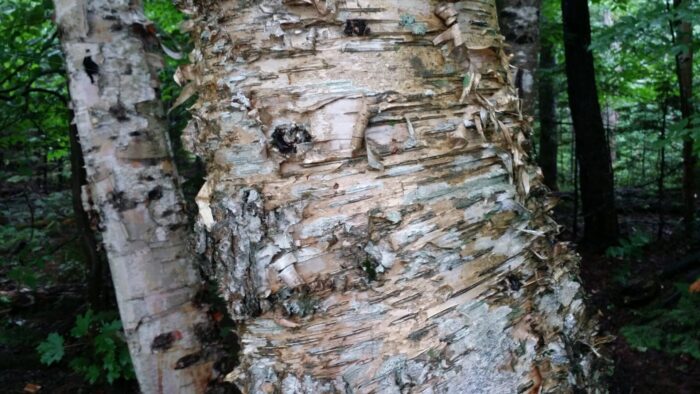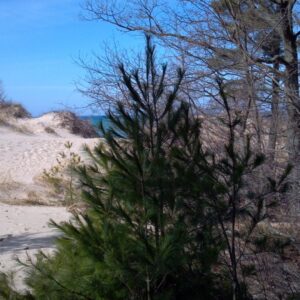Description
Latin Name: Betula alleghaniensis
Other Common Names: Yellow Birch
Hardiness Zones: 3-7
Mature Size: Yellow Birch typically grows to a height of 60-75 ft (18-23 m) with a trunk diameter reaching approximately 3.5 ft (1 m). In open areas, the crown tends to be wide and even, whereas in dense forests with limited space, the crown is smaller and less uniform. A healthy tree can live up to 150 years (Illinois Wildflowers).
Preferred Soil and Climate: Yellow Birch thrives in full sun to part shade and prefers moist, loamy, or sandy soils. It is not well-suited to hot, dry summers and is native to northeastern North America, thriving in cooler regions (Illinois Wildflowers).
Additional Notes: The name “yellow birch” derives from the color of its bark, which ranges from yellow to bronze. The outer bark is thin and peels into papery sheets, while small branches and twigs exhibit a reddish-brown to grayish-brown color. When the inner bark is broken, it emits a slight wintergreen aroma. Leaves grow singly or in pairs on twigs, measuring 2-4 in (5-10 cm) long and 1-3 in (2-8 cm) wide, with an ovate shape and dark green upper surface. Male and female catkins grow on the same trees; male catkins form in clusters of 3 to 6 at twig tips, reaching lengths of 2-4 in (5-10 cm), with a purplish-yellow hue. Female flowers are shorter and green, developing into winged samaras (seeds) when mature (Illinois Wildflowers). Yellow Birch wood is extensively used for flooring, cabinetry, and even toothpicks, with most birch wood in North America originating from this species.
Common Issues: Yellow Birch is susceptible to various pests including caterpillars, aphids, leafhoppers, birch lace bugs, stink bugs, borers, leaf beetles, and sawflies (Illinois Wildflowers).
Wildlife: This tree primarily attracts birds and serves as shelter for mammals (Illinois Wildflowers).
Cold Stream Farm supplies Yellow Birch trees which are grown as bare root seedlings and transplants and sold both wholesale and retail with no minimum order.
Sources:
- Minnesota Wildflowers: Yellow Birch
- New England Wild: Betula alleghaniensis
- Illinois Wildflowers: Yellow Birch
- UCONN Plant Database: Yellow Birch











Evan F. –
I purchased these trees due to the challenging soil condition in the field behind my house. The soil is comprised of heavy marine clay which doesn’t drain well. Four of these 12” high trees were planted this past spring, with one in a location where trees of other species always die. So far, these trees have grown 6″ since planting, and the foliage has maintained its deep dark green color. The tree that I planted in that one bad location continues to thrive where six other trees have failed! I plan to purchase five more in the fall to replace the larch trees that didn’t survive in a normally wet area of the field.
Theresa –
I purchased these as seedlings many years ago and never wrote a review. The trees have been thriving and doing very well! They are well over 20′ at this time and show no signs of stopping. They are planted near (about 15′ away ) from a pond in heavy clay soil. My only concern for them are the local beaver so they are currently in wire “cages”.
Eric Williams –
I have purchased at least 35 yellow birch from CSF. All have survived, and some thrive in challenging, wet and poorly drained areas. This tree, in young maturity, surpasses the canoe birch in looks and utility. (Millions of wood office doors are made from yellow birch veneer – a tribute to the tree, although little credit to the office workers who little care how many great trees are felled for their aesthetic use!). You MUST protect saplings from deer. The white tail vacuums this species. It will grow in shade, but benefits from shaded roots and sunny leader. Be vigilant for bronze birch borer. It is a formidable enemy of this wonderful tree. Please plant this tree! Mother nature doesn’t do a good job at baby birch, for many reasons (mainly the first root -radical- too weak to penetrate forest litter).